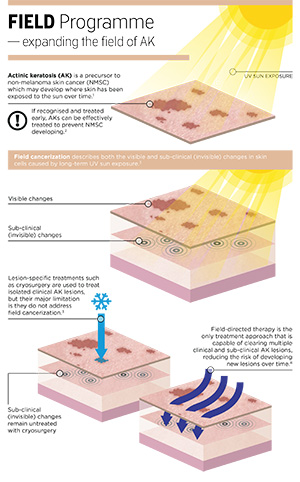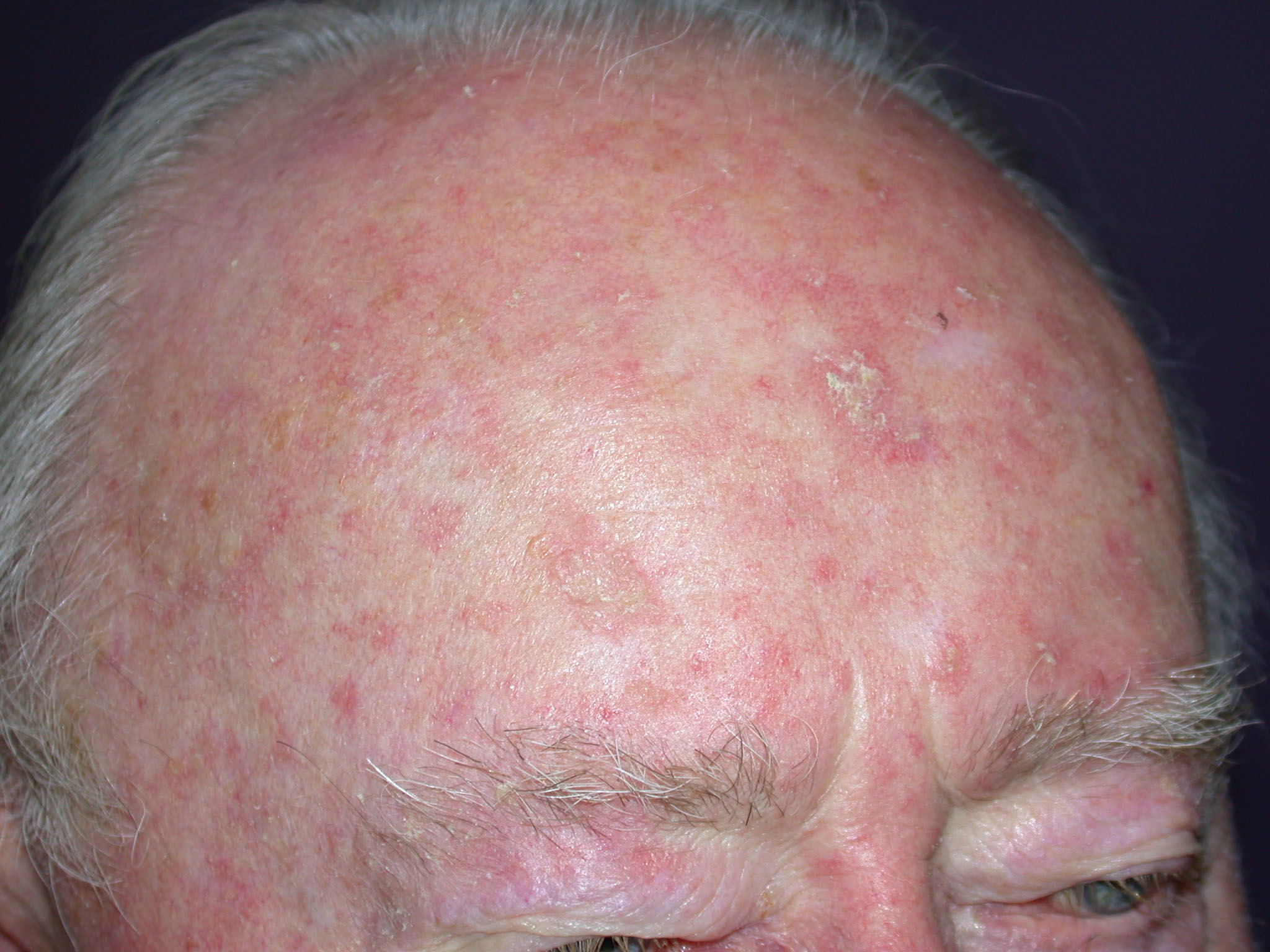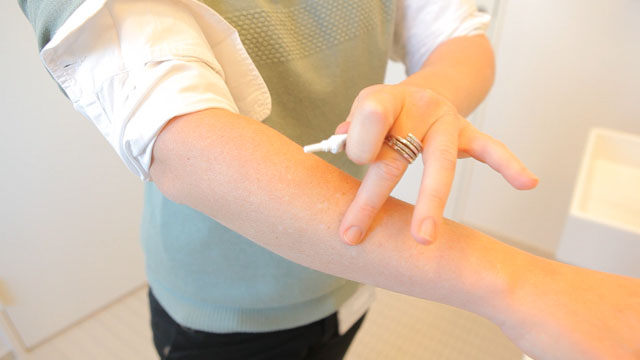
New data presented at WCCS confirm high long-term efficacy of Picato® in patients with actinic keratosis
Ballerup, Denmark, 4 September, 2014 - New data from the international FIELD Study Repeat presented today at the 15th World Congress of Cancers of the Skin (WCCS) in Edinburgh, Scotland, demonstrate initial treatment with Picato® (ingenol mebutate gel) 0.015% is efficacious in treating actinic keratoses (AK) and, when followed by a repeat cycle for persistent and newly emerging AKs, this efficacy is further increased.1 The data also confirm two treatment cycles of Picato® are well tolerated by patients.2
These findings are significant as AK is a chronic disease.1 The presence of underlying sub-clinical (invisible) lesions can lead to recurrence of original AKs and the development of new lesions over time3, which normally require repeat treatment. The FIELD Study Repeat followed patients over a one-year-period, confirming both the short and in particular the long-term benefits when treating once or twice of Picato® – with an overall 50% complete clearance of all AK lesions after one year*.1
Presenting the data at WCCS today, Professor Claus Garbe, Department of Dermatology, University Hospital Tübingen, Germany and Principal Investigator of the FIELD Repeat Study, commented: “AK is a very common precursor to non-melanoma skin cancer, which requires ongoing treatment. The new data from the FIELD Study Repeat validate Picato® as a well-tolerated field-directed therapy, suitable for the long-term treatment of actinic keratoses, showing an overall high complete clearance rate after one year.”
The FIELD Study Repeat is part of the larger international FIELD Study Programme being run by LEO Pharma, designed in partnership with leading clinicians to investigate the potential broader role of Picato® in the management of AK.
Additional data from the FIELD Study Programme was recently published in the Journal of Drugs in Dermatology (JDD)4 with the long-term results of the FIELD Study 1, investigating the efficacy of Picato® as a field-directed therapy used sequentially following treatment with cryosurgery.4
Results show that combining lesion-specific cryosurgery with Picato® field therapy significantly improves the clearance of AK lesions, with an overall 30.5% complete clearance rate, compared to 18.5% with cryosurgery plus vehicle gel over a one year period.4
This elevated efficacy results from enhancing the effect of cryosurgery with Picato® on the visible baseline lesions, and from a ‘field treatment effect’ of Picato® on subclinical lesions not visible at baseline (demonstrated by fewer patients experiencing new lesions when treated with Picato® compared to vehicle gel).4 The data also confirm Picato® field therapy after cryosurgery is well tolerated.4
Dr William Hanke, Founder and Medical Director, Dermatologic Surgery, Laser and Skin Center of Indiana, US, and FIELD Study 1 Principal investigator, added:
“The recently published 12 month data from FIELD Study 1 show sustained patient benefits of field treatment with Picato® in combination with cryosurgery. These data are now reinforced with evidence that repeat use of Picato® is efficacious and well tolerated over the same time period. Combined, these studies provide further evidence for the role of field treatment with Picato® in achieving long-term clearance of AK lesions.”
Follow @LEOHealthySkin for the latest updates from #WCCS2014.
*Patients treated twice with Picato® or treated once and remained clear at 8w, 26w and 44w, 50% were still clear at 12m (44.0%-56.1%, 95% CI)
Global Media Contact
Polly Lutter
Global Communications Manager
LEO Pharma A/S, Denmark
[email protected]
Tel: +44(0)20-7300-6137
NOTES TO EDITORS
1. About Picato® (ingenol mebutate gel)
Picato® is a topical, field-directed therapy which is self-administered by the patient to the affected areas of the skin once a day for two or three consecutive days, depending on the treatment location.5 Picato® has demonstrated efficacy in clearing actinic keratosis lesions on the face and scalp, as well as on the trunk and extremities, in a large clinical trial programme.5
Picato® was approved by the US Food and Drug Administration (FDA) in January 2012; by the Agência Nacional de Vigilância Sanitária (ANVISA) in Brazil in July 2012; by the Therapeutic Goods Administration (TGA) in Australia and the European Commission (EC) in Europe in November 2012, by Health Canada in January 2013 and by the Swiss Agency of Therapeutic Products (Swissmedic) in June 2013.
2. About FIELD Study Repeat1
The FIELD Study Repeat involved 450 patients across 5 countries globally, designed to explore the efficacy and tolerability of Picato® repeated treatment within the same area or ‘field’ on the face or scalp over a 12 month period. For further information please refer to the www.clinicaltrials.gov website (identifier: NCT01600014).
3. About the FIELD Study 14
The FIELD Study 1 involved more than 300 patients across 35 US trial sites and explored the efficacy and safety profile of sequential treatment of AK on the face or scalp with cryosurgery followed by Picato®, 0.015% treatment compared with cryosurgery followed by vehicle gel. For further information please refer to the www.clinicaltrials.gov website (identifier: NCT01541553).
4. About actinic keratosis (AK)
Actinic keratoses are common skin lesions which are often red and scaly.6 The majority of lesions are caused by cumulative sun exposure in fair-skinned people.7 AK is a precursor to non-melanoma skin cancer (NMSC).8 The number of patients with actinic keratosis is rapidly growing, especially in Europe, the US and Australia.9 Prevelance currently ranges from 11-25% in the Northern Hemisphere to 40-60% in the Southern Hemisphere.7
5. About LEO Pharma
Founded in 1908, LEO Pharma is an independent, research-based pharmaceutical company. LEO Pharma develops, manufactures and markets pharmaceutical drugs to dermatologic and thrombotic patients in more than 100 countries globally. The company has its own sales forces in 61 countries and employs around 4,800 people worldwide. LEO Pharma is headquartered in Denmark and is wholly owned by the LEO Foundation.
For more information about LEO Pharma, visit www.leo-pharma.com.
Watch us on YouTube: www.youtube.com/leopharmaglobal.
6. Picato® Abrev. SmPC
Contact with the eyes should be avoided. Eye disorders such as eye pain, eyelid oedema and periorbital oedema should be expected to occur after accidental eye exposure of Picato®. Picato® must not be ingested. Administration of Picato® is not recommended until the skin is healed from treatment with any previous medicinal product or surgical treatment and should not be applied to open wounds or damaged skin where the skin barrier is compromised. Picato® should not be used near the eyes, on the inside of the nostrils, on the inside of the ears or on the lips. Local skin responses such as erythema, flaking/scaling, and crusting should be expected to occur after cutaneous application of Picato®. Due to the nature of the disease, excessive exposure to sunlight (including sunlamps and tanning beds) should be avoided or minimised. Lesions clinically atypical for actinic keratosis or suspicious for malignancy should be biopsied to determine appropriate treatment. There are no data from the use of ingenol mebutate gel in pregnant women. Risks to humans receiving cutaneous treatment with ingenol mebutate gel are considered unlikely as Picato® is not absorbed systemically. As a precautionary measure, it is preferable to avoid the use of Picato® during pregnancy. Actinic keratosis is not a condition generally seen within the paediatric population. The safety and efficacy of Picato® for actinic keratosis in patients less than 18 years of age have not been established. Please see full prescribing information available at www.leo-pharma.com.
7. References
- Garbe C. Ingenol mebutate gel 0.015% repeat use for multiple actinic keratoses on face and scalp: a 12 month pahse 3 clinical study. Presented at the World Congress on Cancers of the Skin, Edinburgh, Scotland. 4 September 2014
- LP0041-22 Clinical Study Report EudraCT no. 2011-005018-13 01-Jul-2014 page 1,165
- Berman B et al. Cutis. 2012; 89:241-50
- Berman B et al. Journal of drugs in dermatology : JDD. 2014; 13:741-7
- Lebwohl M et al. N Eng J Med. 2012; 366:1010-9
- Goldberg L and Mamelak A. Journal of drugs in Dermatology. 2010; 9:1125-32
- Frost C et al. The British journal of dermatology. 1994; 142:722-6
- Sober A. Cancer. 1995; 75(2 Suppl):645-50
- Ulrich M et al. Expert Opinion. 2010; 15:545 - 55
Video Gallery
Photo Gallery
Global Media Contact
Polly Lutter
Global Communications Manager
LEO Pharma A/S, Denmark
[email protected]
Tel: +44 (0)20 7300 6137








